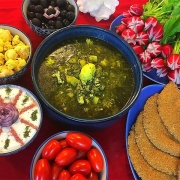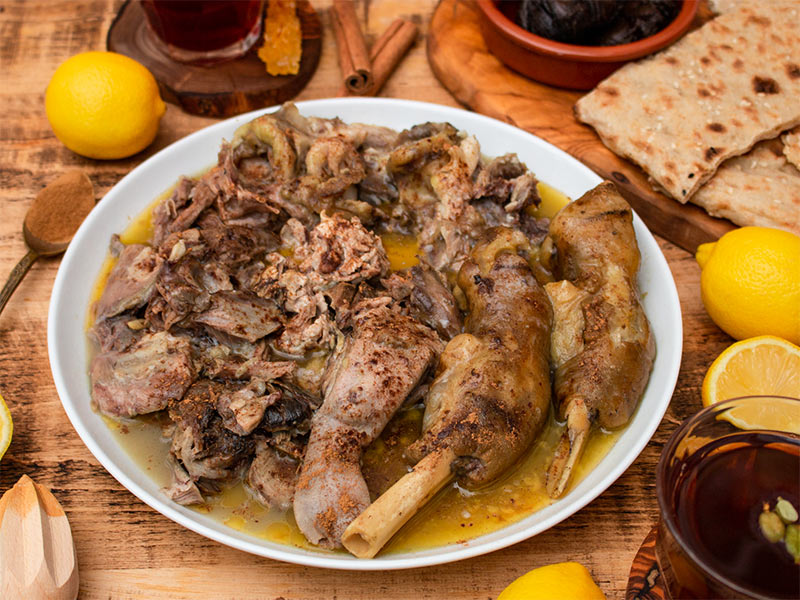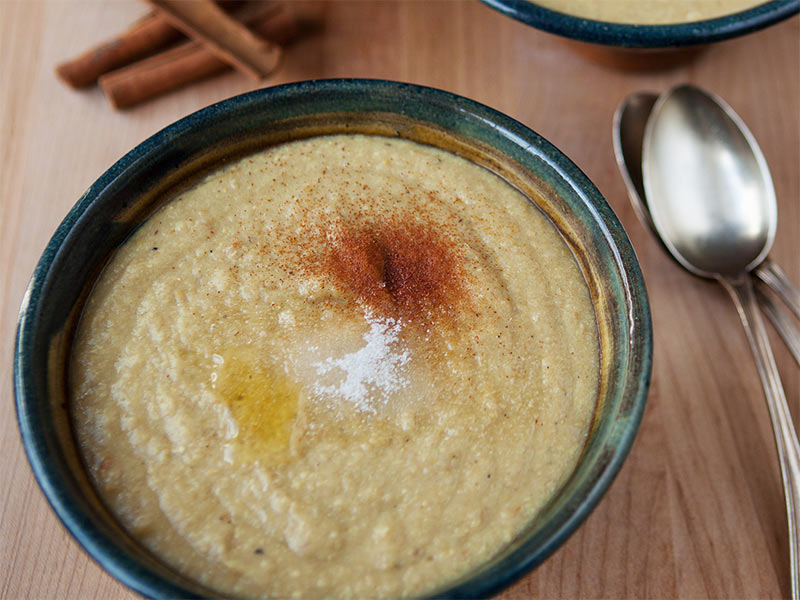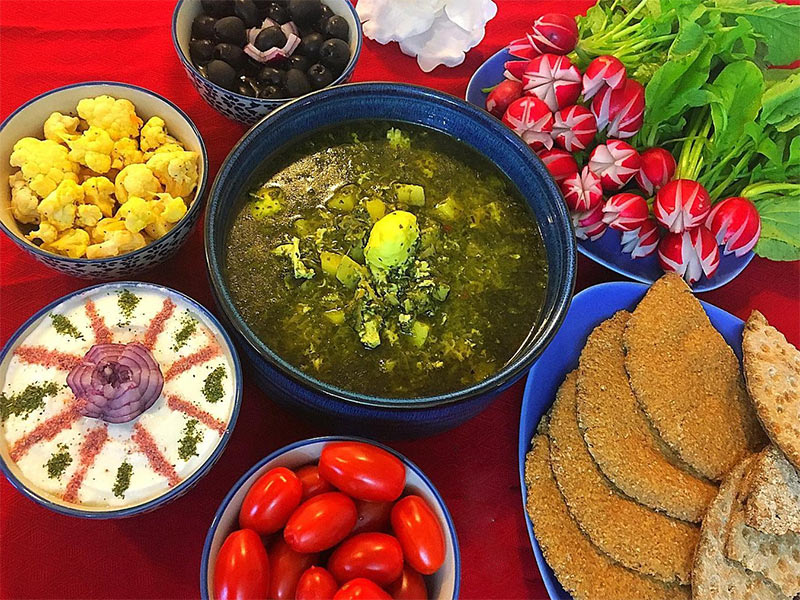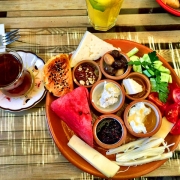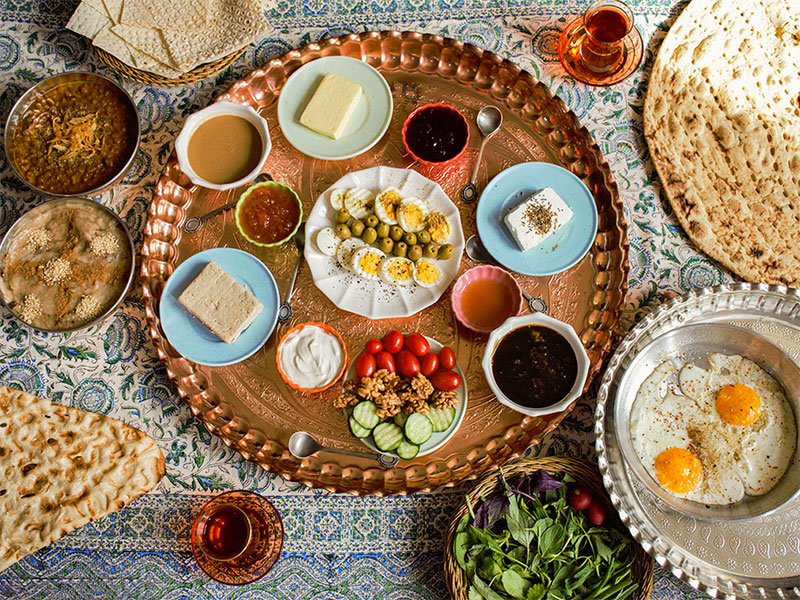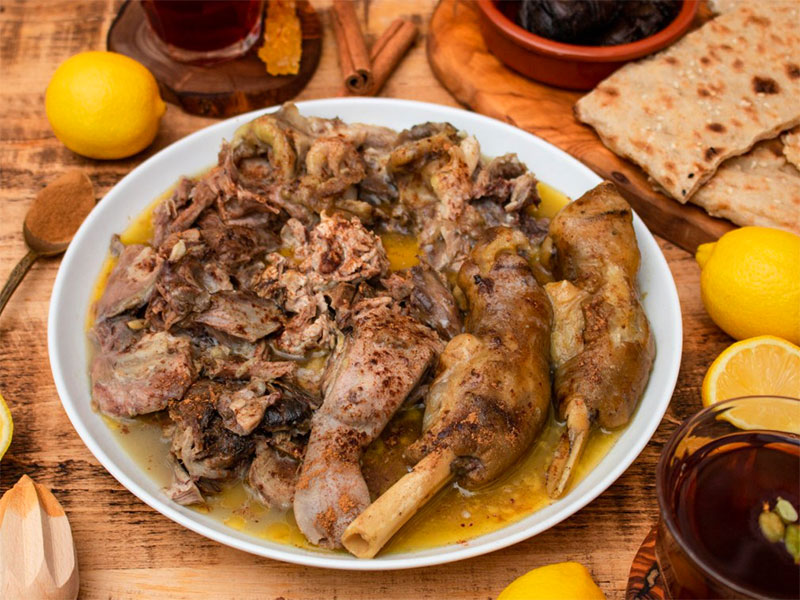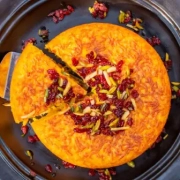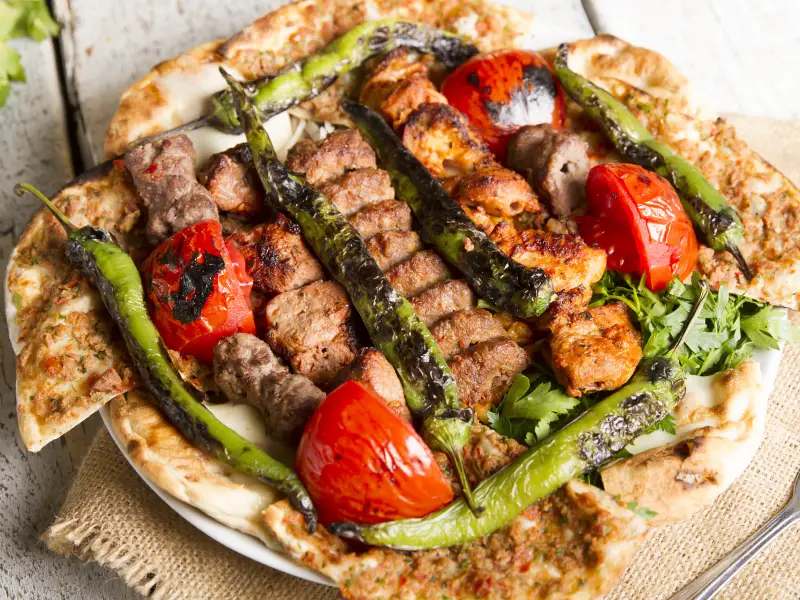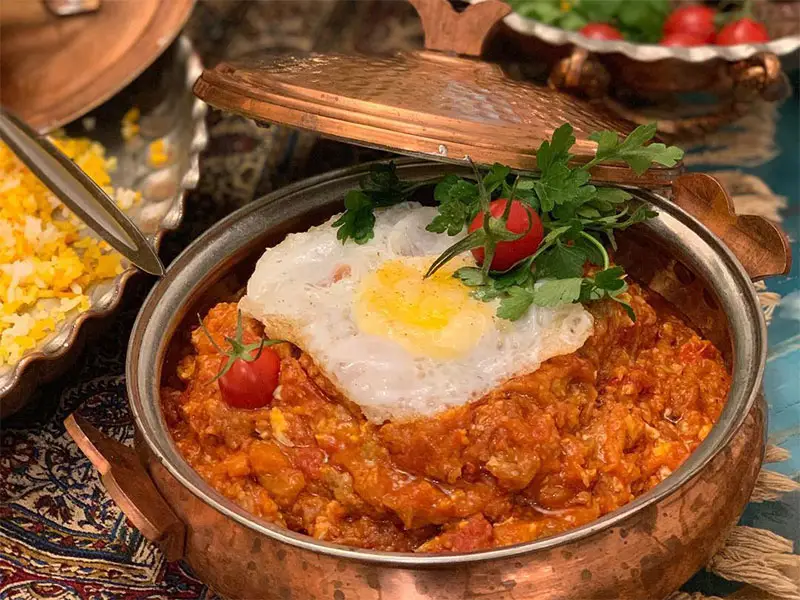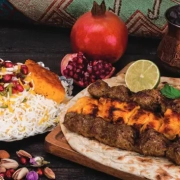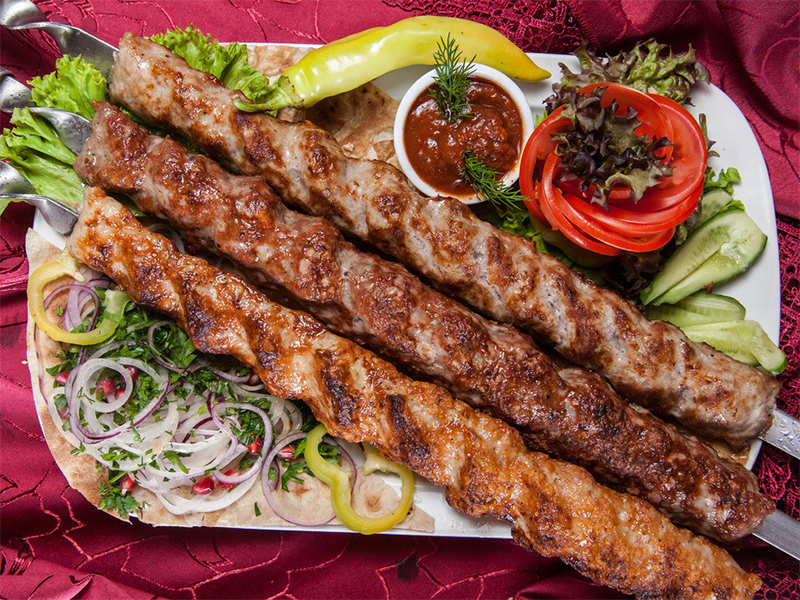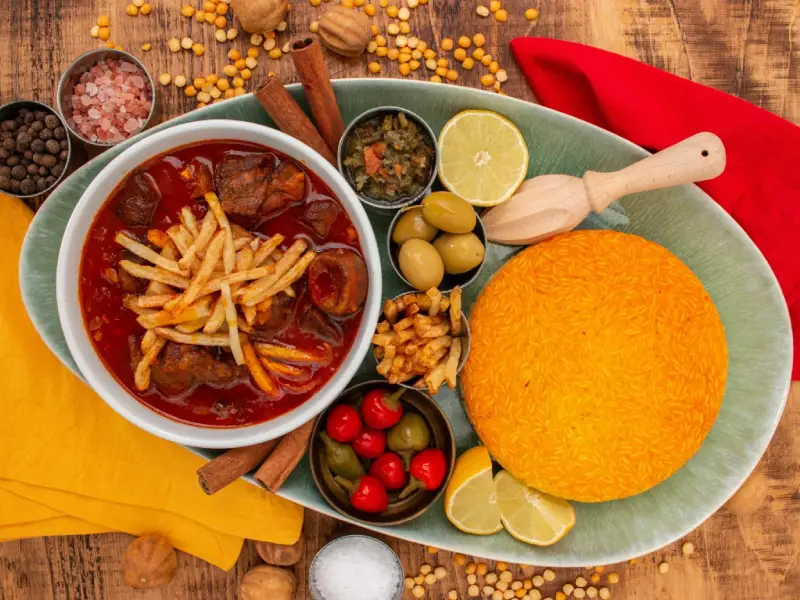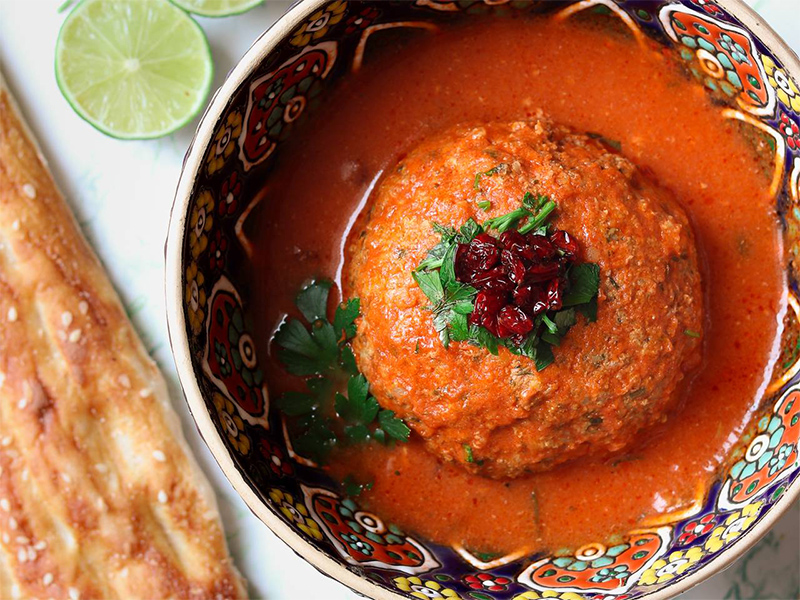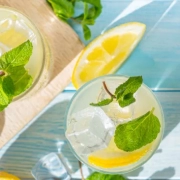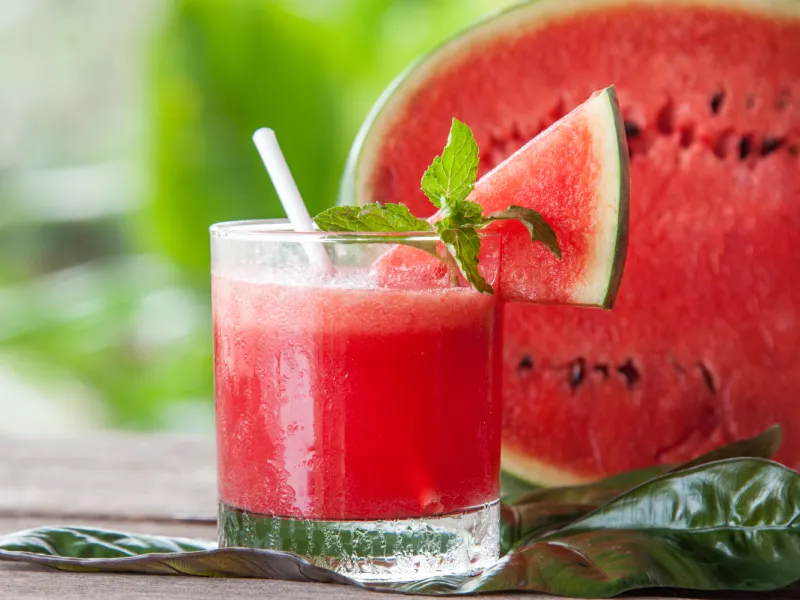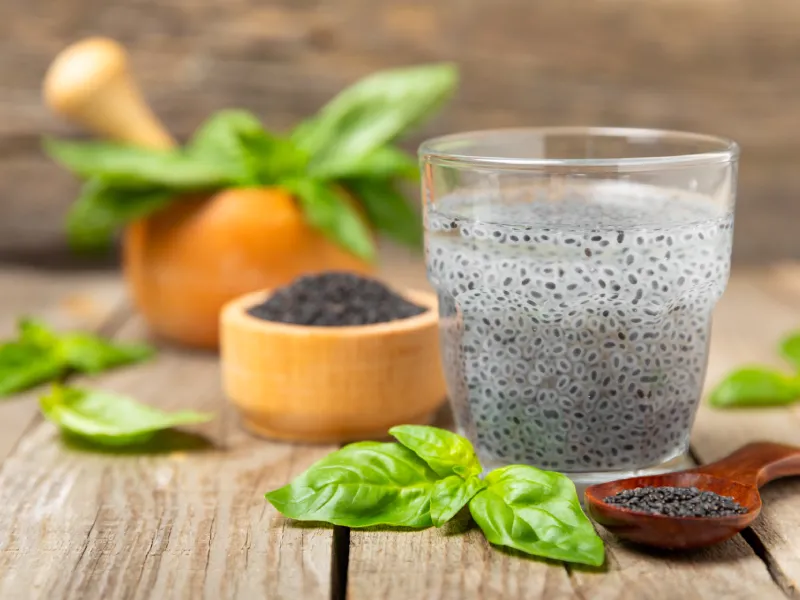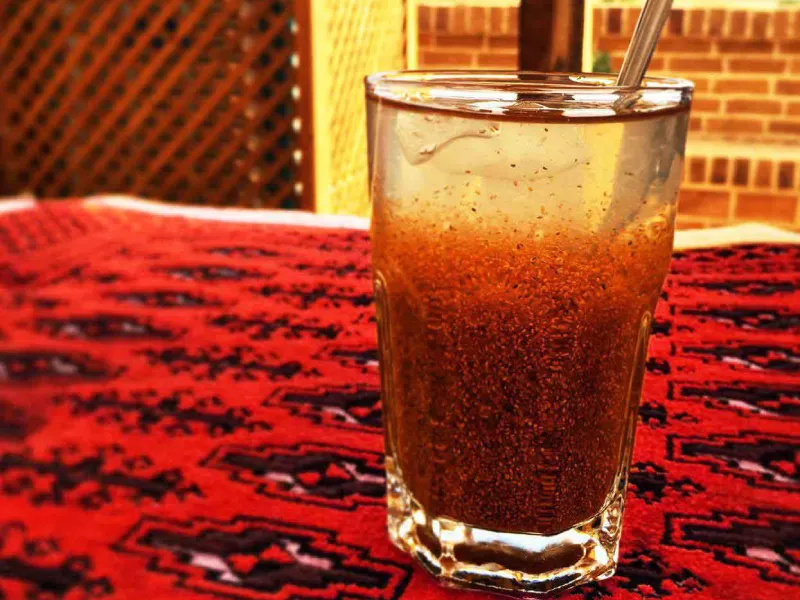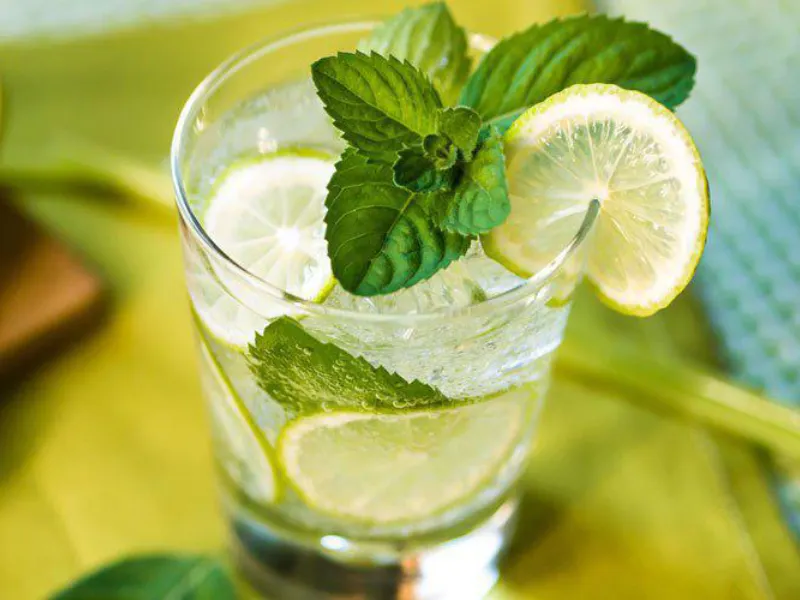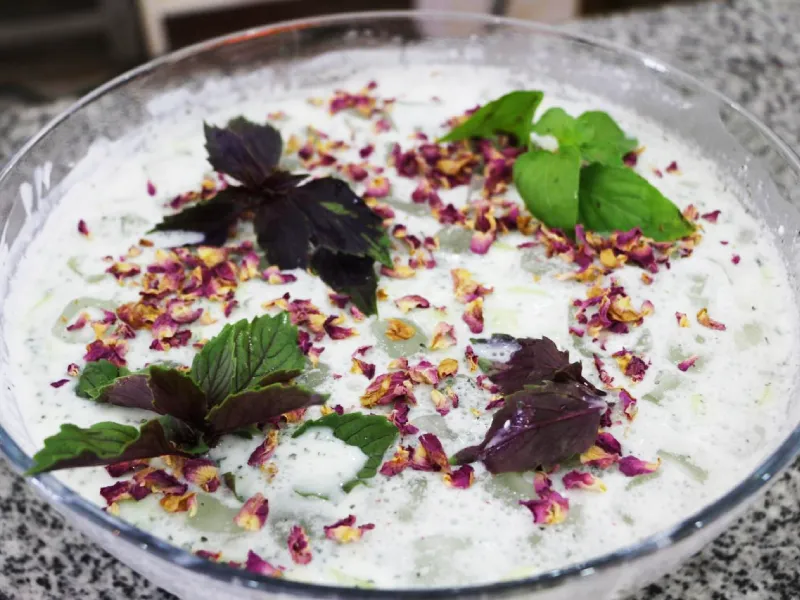When you are travelling, whether you are a foodie or not, you have to taste local food. How could you go somewhere without trying any local dishes? Trying Persian food in Iran is no exception.
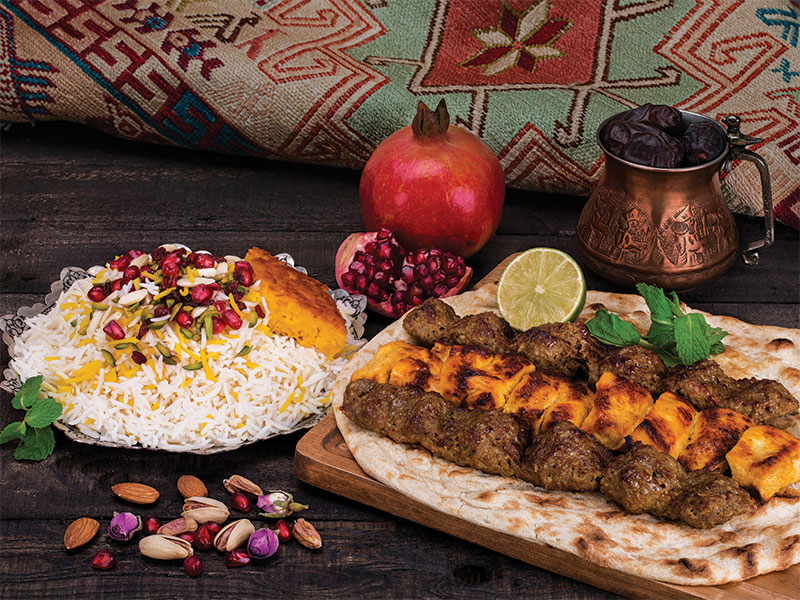
Iranian cuisine is the most memorable part of traveling to Iran.
Travel in itself is not a one-dimensional endeavour. It is supposed to be done using all senses and feelings. Giving up on this idea would somehow handicap the full potential of your travel experience. Besides, food is probably the easiest element to experience in a culture. You just have to eat it, let it defy what you had previously known about food, and be awed by the discovery. And in my travels, few foods left me as awed as the Persian food.
There is something truly unique about Persian food. It doesn’t differ from the European foods I’ve tasted simply in terms of ingredients or cooking techniques. What differentiates Iranian cuisine is a paradigm shift in the way you’re supposed to feel tastes. No matter if you are eating a kebab or any of the many stews originating from this country, or any other Persian food for that matter, you simply can’t expect to feel any familiar taste! And there are more than just one reason to try it!
If we are to take a more famous example for comparison, such as the Mediterranean cuisine, foods in Italy, Greece, and Southern France from five hundred years ago were the precursors of what you may taste there today. They were very different from their current form.
If we go even further back we’ll find out we lost countless recipes! It used to be that the ancient Romans served some of their dishes with Garum, a mix of putrefied fish guts and salt and spices (doesn’t it sound inviting?). Before that, the Greeks used to mix their wine, which was more like nowadays Porto than normal wine, with water and honey and spices. In half of Europe the word for the liver is a variation of the Latin word “ficus”, fig, since liver used to be served with a side of figs. Yet, did you ever try any of these things?
The past centuries have transformed the European culinary art in the direction of simplification. This is by no means a bad thing, as it just represents a philosophy of food: nowadays, in most of the world, common practice usually dictates that just a couple tastes are allowed to collaborate or duel in the mouth for the ultimate pleasure of the taste buds. Any diner will thus engage with a well-defined, carefully designed, targeted aroma.
In Iranian cuisine, on the other hand, a dish is not made to please the palate with an easily discernible taste. Sweet and sour, salty, bitter, and umami can all be present in an Iranian dish, and do so harmoniously. Meat, pomegranate, nuts, onion, and butter can easily find their way in one single Iranian dish. As you eat you’ll find out how these tastes come in layers and constantly keep you guessing. Any bite or spoonful is a mix of different proportions of this or that, an alchemy of wildly distinct tastes.
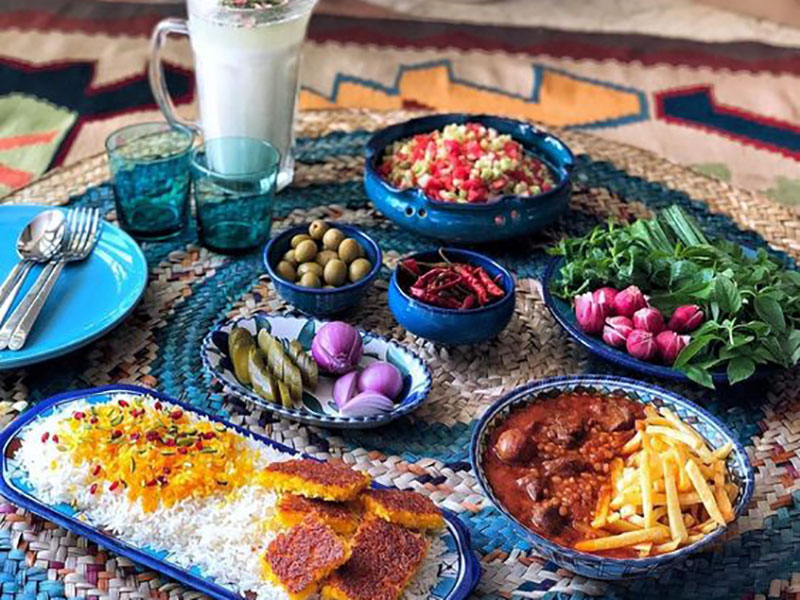
Gheime: A tasty Persian food
Why?
Because the distinctiveness of the climates and biomes in Iran provides for a huge choice in matter of ingredients. Iran also used to be the first multicultural empire in the history of humanity, and its crossroads position in Asia brought on countless migrations, invasions, and trade routes with yet more ingredients. There is now a myriad of people, even a couple of entire nations inside Iran. True to the rich history of ancient sciences and philosophies that used to travel with these peoples, here foods are classified according to ancient tables, like you would do with alchemy, in cold foods and warm foods. It has nothing to do with the actual temperature of the food, as much as it has to do with the effect that it has on the body of the consumer. Good practice says that at any table the cold foods and the warm foods should be equilibrated, and this tradition, originating probably from ancient Greek medicine over two thousand years ago, is still alive today! Eating Iranian is, in all senses, a jump in the culinary past of our world.
Needless to say, all these factor has make this country the origin of a wealth of different tastes that deserve to be tried. As a fan of Asian food I can tell that, despite it not being famous enough, Persian food has nothing to envy to Thai, Chinese, or Japanese.
Persian food is a culinary rainbow. It is no wonder that it is not possible for me, unless I intended to write a Tractatus, to describe all the delicacies that I have come across. I will nevertheless give you a few examples of things you should definitely try if you go to Iran, or if you stumble upon a good Iranian restaurant (and I strongly encourage you to!).
Kebab
Can’t reasonably start with anything else! Kebab is, of course, the most famous Iranian dish around the world. One could say that it is something that originates in the whole Middle East. While this might be true, the best kebab I have ever eaten was in Iran. Forget the usual roll-up you’re used to in Europe, this is entirely different. It is usually a skewer of either slices of meat or minced meat. It tastes like heaven and is always accompanied by some rice and vegetables, among which baked tomatoes and raw onion, useful for cutting the meaty taste between one bite and another.
The cook may attempt to freshen it up some more by giving you some lime and parsley, or can tradeoff the simplicity of the meat taste for a more intense experience, through marinating the meat and using sauces unlike anything we can think of in Europe.
In any case, I agree with the Iranians’ prideful boast that “You haven’t really tried kebab until you tried the Iranian one”
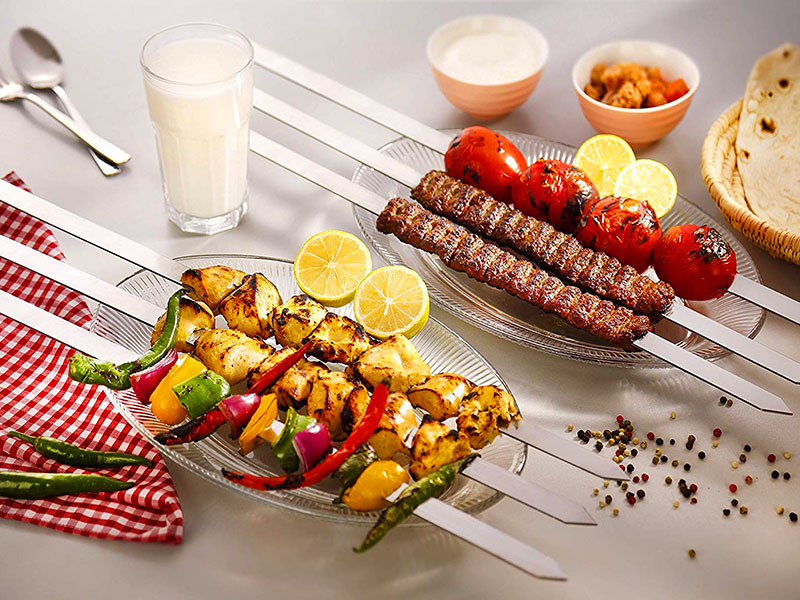
You have not tried kebab until you try the Iranian one!
Rice
Again, I can’t reasonably not continue with rice. Rice is a staple food in Iran, and more often than not everything else is accompanied by it. It is so since the 16th century, when it became widespread among the population, although it is supposed that the Persian rice dishes had been by that time in evolution in the Persian nobles’ kitchens for some seven hundred years already. Iran doesn’t only have some areas very suitable to rice cultivation, such as Gilan, but also access to different types of rice and methods of preparation. This is the consequence of neighbouring other countries that have also been huge consumers of rice. Of particular notice is the fact that Persia has had immense historical cultural contact with northern India, so it is certain that some dishes and techniques relative to the cooking of rice have travelled between the two regions.
Rice can be prepared as chelo, where the rice is boiled a bit and then steamed to make it fluffy. It is simply covered with some spices, saffron, and ready to accompany another food, such as kebab. The other type of rice is polo, where the rice is boiled until all water evaporates, and there are fruits, pieces of meat, or other ingredients boiling with it. This particular type of cooking has become so famous that, through either Turkey or Russia, pilav\pilaf rice is eaten in the traditional cuisine of my very own Romania, in eastern Europe.
Also, regardless of how you cook it, all rice that stays on the bottom of the kettle and becomes crunchy is tah-dig, and it is often fought for by Iranian diners.
Expect saffron, raisins, pomegranate, nuts, olives, cinnamon, and many more ingredients with your rice.
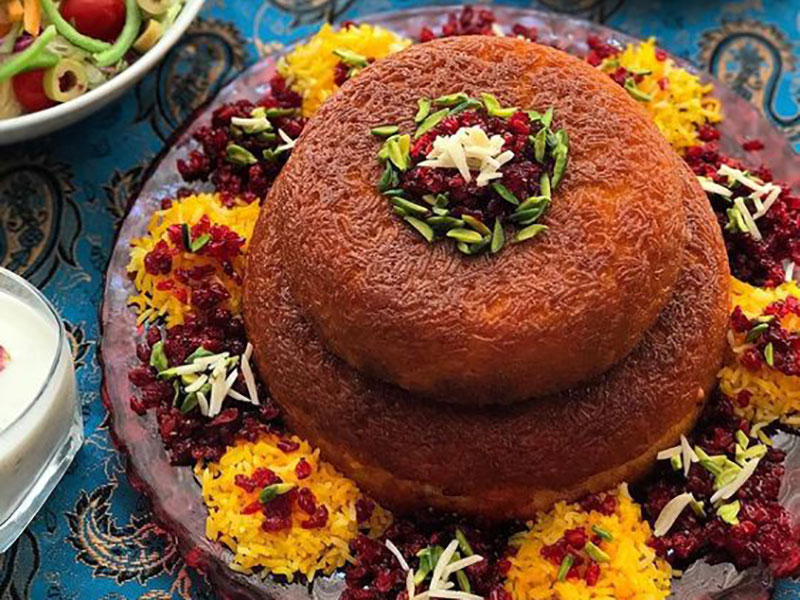
Rice is cooked in various different forms in Iran; you may see it as fluffy white called “Chelo” or mixed with other ingredients called “Polo”.
Khoresht
Literally meaning stew, and the most used accompaniment to chelo rice. The greatest variety of ingredients is probably used in the preparation of stews.
If you try Fesenjoon you will taste some chicken with a sauce of pomegranate juice, nuts, and other ingredients which can either make it sweet or sour. If you go for Ghormeh Sabzi you will experience a blend of no less than thirteen types of herbs with just a couple cubes of meat for extra taste and some kidney beans which make it, among other things, very pretty to look at. And there are many, many more! Lamb fat and potatoes, mushrooms and vegetables, prunes and meat, plus innumerable varieties or plays on local ingredients in the various regions of the country. Iranian stews are a world to be explored, and each one of them is delicious for a whole array of different reasons.
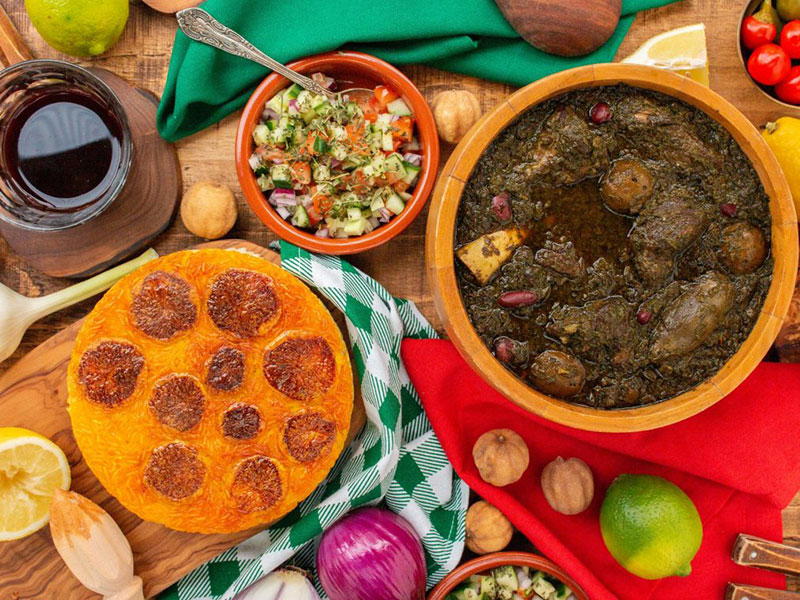
Ghorme Sabzi: A typical Iranian stew served with rice.
Ash
Soup. Again, nothing you might have seen before. Some soups are complex and similar to stews that look like the Hungarian Goulash. Some others are made of just out of a couple of ingredients, such as the one made of only yoghurt, water, and cucumbers. This one is a life-saver on a hot summer day, and my personal favourite. In any case Iranian soups can either be excellent as an entree, or be the whole meal if you just feel a bit peckish. Different assortments are available depending on what you want to eat next.

Ash Reshte: A kind of Iranian thick soup which is a life savor in cold winter days.
Yoghurts
Not only used to make tasty soups, as the one mentioned just above, youghurt, it seems to me, is ever present in Persian cuisine in a lot of different roles. After you travel to Iran, I think, all yoghurt-based foods and drinks are the easiest to replicate when you go back home. They do not require a lot of effort or complicated ingredients to make, and certainly deserves your curiosity whether you like dairy products or not.
Doogh is the first thing that needs to be mentioned. It sure is one of the tastiest drinks I’ve had in my whole life. One of the healthiest, too! It is yoghurt mixed with water and aromatic herbs. Drink it with any meal, and it will make a nice contrast with what you’re having. Drink it during a hot day and you’ll feel as fresh as ever, especially if you put some mint inside. Forget Coke! If the world started using Doogh instead of other drinks during meals we’d cut obesity, diabetes, and other diseases out of our lives. Doogh production secrets are the main thing I’m gonna carry back to Italy. Call me a spy if you want. I’m in love with it! Can’t live without it.
Next thing is the yoghurt strained with some herbs, nuts, cucumber, and scallion. This is usually consumed either before or after a meal. Then there’s also the yoghurt with eggplant puree, and many others.
With just a few ingredients and water Iranians can make quite a few varieties of delicious yoghurts that can be drank or eaten before, during, or after a meal.

Yogurt; either mixed with other ingredients such as cucumber or herbs or simply itself, has a special place on the Iranian table.
Ad infinitum
Those above are just the main categories, the most consumed types of Persian food on an Iranian menu. Most Persian foods escape any attempt at categorization. Kuku, Tebrizi Koofteh, Mirza Ghashemi as main or side dishes are just a few examples of such foods in a sea of others. There’s more types of Persian bread than I can remember.There are plenty of types of desserts, such as Koloocheh and Gaz. When you drink tea you’ll be offered saffron rock candy, cinnamon, and other spices to make after your own exotic taste. Salads are made following schools of different countries, such as the Russian style or the French one, but always modified according to Iranian taste. And so it goes…
As I said at the beginning of this article, a whole treatise would be in order to describe it all. Or maybe it wouldn’t be enough. After three months here I can say that I still find new dishes that I hadn’t known or new versions of dishes I had already tried on almost a daily basis. This list could go on ad infinitum.
I suspect that if you’re not Iranian you won’t be able to taste it all. Don’t even try. Luckily that is not a problem!
I can say that, ultimately, Persian food itself did not only impress me because of its exotic tastes. After the first few days in Iran, I was surprised by a trend: every time I’d eat, I’d be surprised by something entirely new to me. And then I have discovered the fact that these dishes have maintained their core preparation methods for hundreds of years. I found out small bits of Iranian ancient culinary philosophy, whose origins are shrouded in mystery. All this made the culinary dimension of my travel an adventure of discovery of this mystical realm. Every time I go to a friend’s house or a restaurant, I know I’ll feel something new. I don’t have to look for it, it just happens to be on the menu.
So if you are planning to travel to Iran, or just have for some time been curious about that Iranian restaurant in your town, don’t hesitate! Go, throw yourself in this experience, and let either luck or curiosity cull you into one of the richest, more ancient culinary traditions in the world. Check out Iran food tour.
And “Bon appetit!”, “Enjoy your meal!” or, should I say, “Noosheh jan!”

